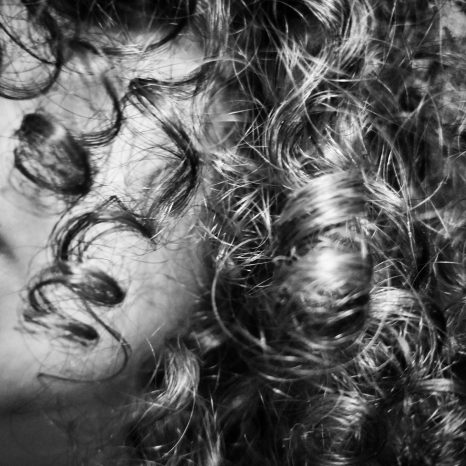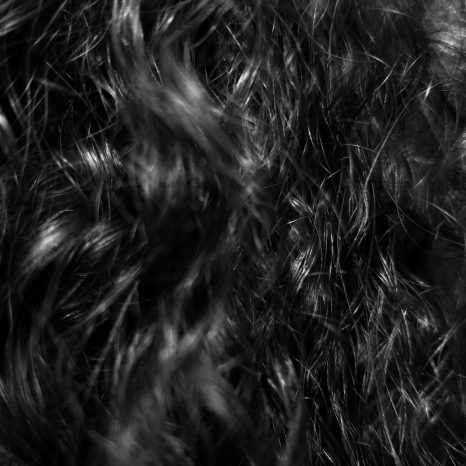Completing the Story - How 3.9 Collective Came, Saw, and Conquered stARTup
When we first met Rodney Ewing at one of our non-profit partners, Root Division, we were struck by his size and quiet powerful presence. In total synergy with his art, Ewing's work is large, direct, and honest, with subtleties, elegance, and a quiet knowing that spotlights current and past events as a call to change the future.
As one of the founding members of 3.9 Collective, an association of African American artists, curators, and art writers who live in San Francisco who came together to draw attention to the city’s dwindling black population, Rodney is doing just that. But there's more to the story...
stARTup SF 2015, LA 2016, CHI 2016 exhibitor Rodney Ewing working in his studio
Formed just prior to the 2010 census, the Collective took its name from a report in The San Francisco Bay View, a weekly paper that predicted the city’s black population would decrease dramatically—to 3.9 percent of the total population. The Collective adopted this statistic as an act of resistance and a commitment to the ideals and narratives of a diverse San Francisco.
Through multiple forms of presentation and outreach, 3.9 Collective creates and claims spaces to display art work; nurtures young artists and develops educational programs for students; and writes about and curates exhibitions meant to generate productive, cross-cultural dialogues.
SFAC commission: Art on Market Street. Six unique images by Rodney Ewing in bus kiosks along SF's busy commercial corridor.
stARTup usually donates at least four exhibition rooms for non-profit arts organizations at every hotel fair. We are always looking for organizations that share our value for supporting the professional success of artists, and we feel that 3.9 Collective does exactly that for their members, so we've been honored to include this group in the past two San Francisco editions.
In the last stARTup SF edition, 3.9 also headed up an exciting and popular Art Conversation about the value of collecting from African American artists. The following are works of art by three more 3.9 Collective members, plus the video of that dynamic and informative panel discussion.
As a curator, Rhiannon Evans MacFadyen is inspired by “productive discomfort” and her multiplicity of identities. Her curatorial focus is on projects that push boundaries of scale, scope, medium, venue, and dialogue. Her cross-discipline personal artwork engages symbols, identity, communication, and the unseen.
stARTup SF 2018 and 3.9 Collective exhibitor Rhiannon Evans MacFadyen
Rhiannon's (Don’t) Touch My Hair is a series of wearable objects, made of leather and human hair, and mixed-media installations on the topic of hair and the subjugation of the black female body. Spurred by experiments with presentations of cultural identity as a mixed-race woman, each element is autobiographical while resembling ambiguous “African” specimens. To the wearer, it may resemble a shield, while to the viewer/consumer it may take on a fetish-like character.
Fair-goers were asked to analyze their motivations to touch Rhiannon's hair, as well as other microaggressions they may or may not be aware of.
stARTup SF 2018 and 3.9 Collective exhibitor kija lucas
kija lucas uses photography to explore ideas of home, heritage and inheritance. She is interested in how ideas are passed down and seemingly inconsequential moments create changes that last generations.
On the series: "Collections from Sundown" Lucas writes that she, "focuses on my grandmother who suffers from Alzheimer’s disease. The term Sundown here refers to both Sundowner’s Syndrome, a symptom of Alzheimer’s, and the metaphor for the end of life. Sundowning includes increased confusion, collecting and packing of belongings, and often preparing for a perceived trip. These still lives include images of what she collected in a single day, as well as groupings of notes she wrote over a period of several years, and make evident the changes in reality that come with her disease. The notes reflect the repetition experienced by loved ones of a person with Alzheimer’s."
William Rhodes explores themes of hidden knowledge, iconographic imagery and forms and how they can change meaning in a given cultural context. For Rhodes, exploring "the contrasts between these traditional cultures and our modern one have also added depth to the narrative quality of my work."
Libby Rosof once wrote after interviewing Rhodes, "Although raised as a Catholic, Rhodes came to question Catholicism and his relationship with God following his father’s death, which he called a “traumatic loss.” His grandmother’s small Virgin Mary presides over the mantel on which she stands. Rhodes incorporates in his work the gilding in the Catholic churches of his childhood, as well as a sort of pan-spiritual consciousness – African religions, Buddhism, and even astrology – that infuses his work and materials."
Soldier Installation at 3.9 Collective's Room for stARTup SF 2018
Completing the Story - The Value and Richness of Collecting African-American Art
American culture would not be what it is today without its strong African American influence. With the opening of the National Museum of African American History and Culture in Washington DC, much has changed to facilitate a solid properly - valued market for several categories of Black American art. For a long time many African American artists had not been included in the history of American art, and that's changing. The story of African-American life through visual arts gives a broader sense of culture with regard to American art in American history.
Watch the video in its entirety here and visit the stARTup Art Fair Facebook page for many more past Art Conversations.
Panelists include: A. Kelly Paschal-Hunter, Director of Paschal Hunter Gallery; Rhiannon MacFayden, Gallerist/Curator; Teresa Moore, Collector; William Rhodes, Artist/Collector; and Kristine Mays, Artist/Collector
If you've missed any past Art Conversations from our art fairs, plus satellite San Francisco and Los Angeles art events, you can find them on our Facebook page.
Find more Art Conversations on the stARTup Facebook page. Click 'videos' to watch and let us know what you think.
Sign up for the newsletter and follow us on Instagram for more behind-the-scenes moments and details about our fairs, artists, and special exhibitions.
Videography by Ant Farm Media
Feature by Content Curator Mica England and Business Development Director Shannon Kaye









